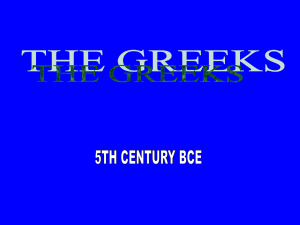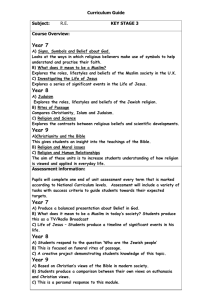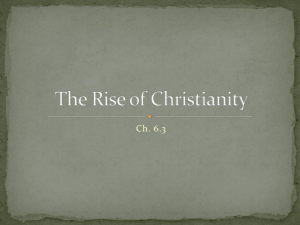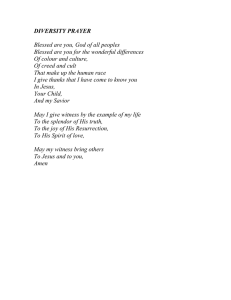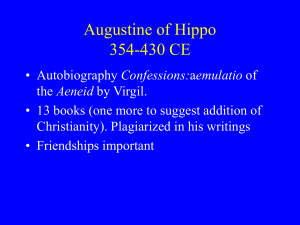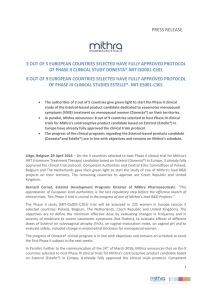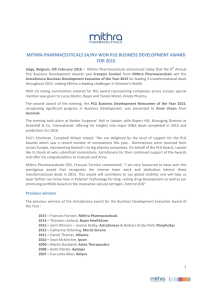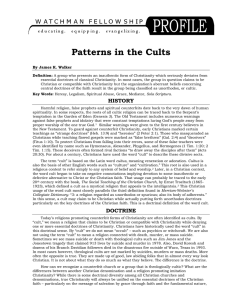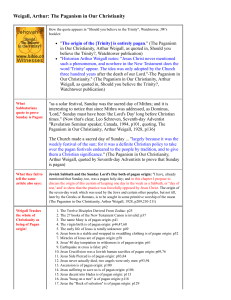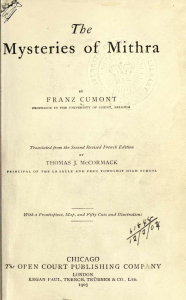huma 1301 chapter 4 Flowering of Religions.doc
advertisement
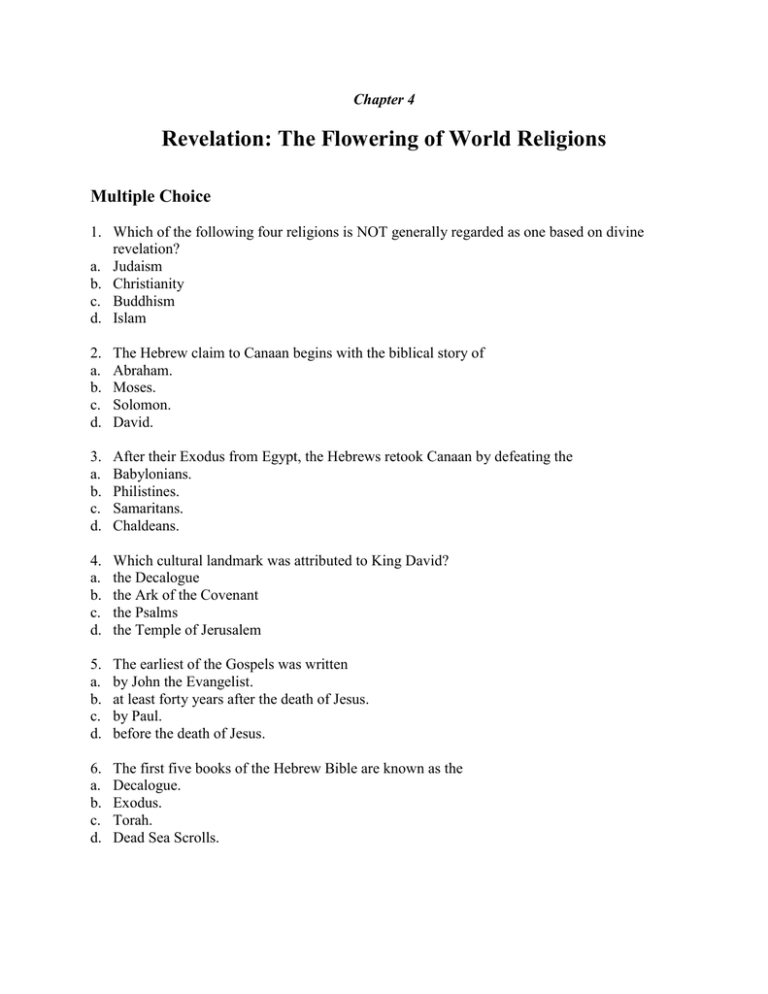
Chapter 4 Revelation: The Flowering of World Religions Multiple Choice 1. Which of the following four religions is NOT generally regarded as one based on divine revelation? a. Judaism b. Christianity c. Buddhism d. Islam 2. a. b. c. d. The Hebrew claim to Canaan begins with the biblical story of Abraham. Moses. Solomon. David. 3. a. b. c. d. After their Exodus from Egypt, the Hebrews retook Canaan by defeating the Babylonians. Philistines. Samaritans. Chaldeans. 4. a. b. c. d. Which cultural landmark was attributed to King David? the Decalogue the Ark of the Covenant the Psalms the Temple of Jerusalem 5. a. b. c. d. The earliest of the Gospels was written by John the Evangelist. at least forty years after the death of Jesus. by Paul. before the death of Jesus. 6. a. b. c. d. The first five books of the Hebrew Bible are known as the Decalogue. Exodus. Torah. Dead Sea Scrolls. 7. a. b. c. d. An integral aspect of Hebrew monotheism is the theme of reward in heaven, punishment in hell. a universe of spontaneous creation. a covenant between human beings and God. the inherent sinfulness of human beings. 8. a. b. c. d. Paul helped transform Christianity into a major religion by becoming Jesus’ first disciple. preaching to the Gentiles. writing the first of the Gospels. All these answers are correct. 9. Christianity was legalized a. by the Edict of Milan. b. in the time of Octavian. c. after the fall of the Roman Empire. d. All these answers are correct. Answer: a 10. In early Christian artistic tradition, which apostle was depicted as a lion? a. Matthew b. John c. Mark d. Luke Answer: c 11. Which of the following themes or images would have been LEAST likely to appear in Christian art before the fifth century? a. the crucifixion of Jesus b. evangelists represented as animals c. Jesus as the Good Shepherd d. fish imagery 12. The Latin Church father who wrote the City of God is a. Jerome. b. Paul. c. Augustine. d. Benedict. 13. The north/south arms of the early Christian church are called the a. nave. b. narthex. c. clerestory. d. transept 14. The Christian calendar, which dates time from the birth of Jesus, was formulated by a. a sixth-century abbot. b. Constantine. c. Augustine. d. Justinian. 15. The greatest architectural landmark of Byzantine Constantinople was a. Hagia Sophia. b. the Dome of the Rock. c. San Vitale. d. the Arch of Titus. 16. In the Muslim faith, the word “Allah” means a. God. b. prayer. c. unity. d. praise. 17. The holy city of ________ is the birthplace of Mohammad, the destination of the Muslim pilgrimage, and the site of the sacred stone known as the Kaaba. a. Medina b. Mecca c. Jerusalem d. Baghdad 18. The obligatory Muslim pilgrimage to Mecca is known as the a. jihad. b. imam. c. hijra. d. hajj. 19. A basic element in the arts of Islam is a. the representation of Muhammad. b. Arabic calligraphy. c. realistic depictions of humans and animals. d. All these answers are correct. 20. Christianity and Islam have in common a. a belief in life after death. b. a doctrine of final judgment and resurrection. c. faith in a monotheistic god. d. All these answers are correct. 21. Which of the following statements about the pre-Christian cult of Mithra is FALSE? a. The cult was popular among Roman soldiers. b. Devotees of Mithra celebrated his birthday on December 25. c. Membership in the cult of Mithra was dominated by women. d. Mithraism required ritual baptism and a communal meal of bread and wine. 22. The goal of the Buddhist is a. escape from rebirth. b. eternal life in heaven. c. material wealth. d. All these answers are correct. 23. One landmark of early Buddhist culture is the a. stupa at Sanchi. b. Great Wall of China. c. Kaaba. d. Dome of the Rock.

